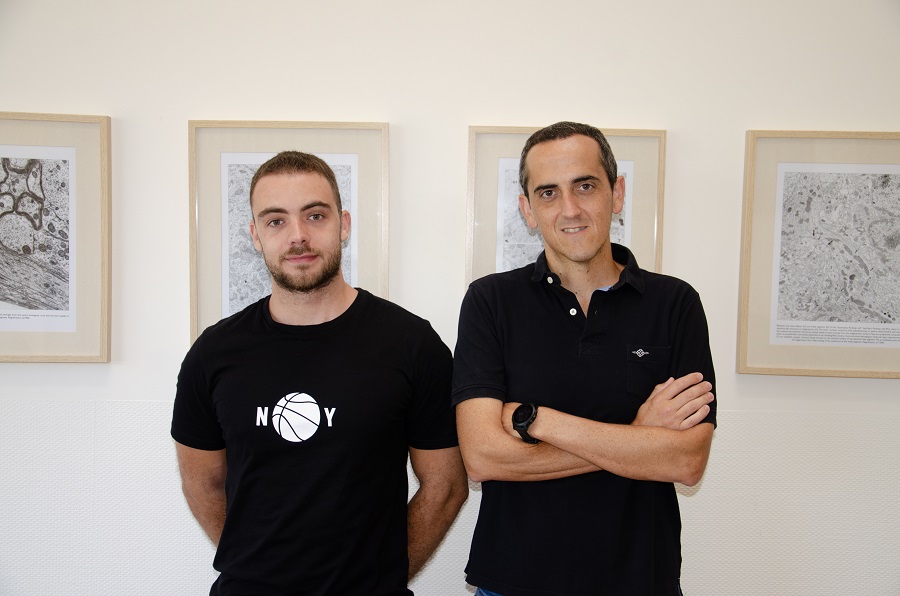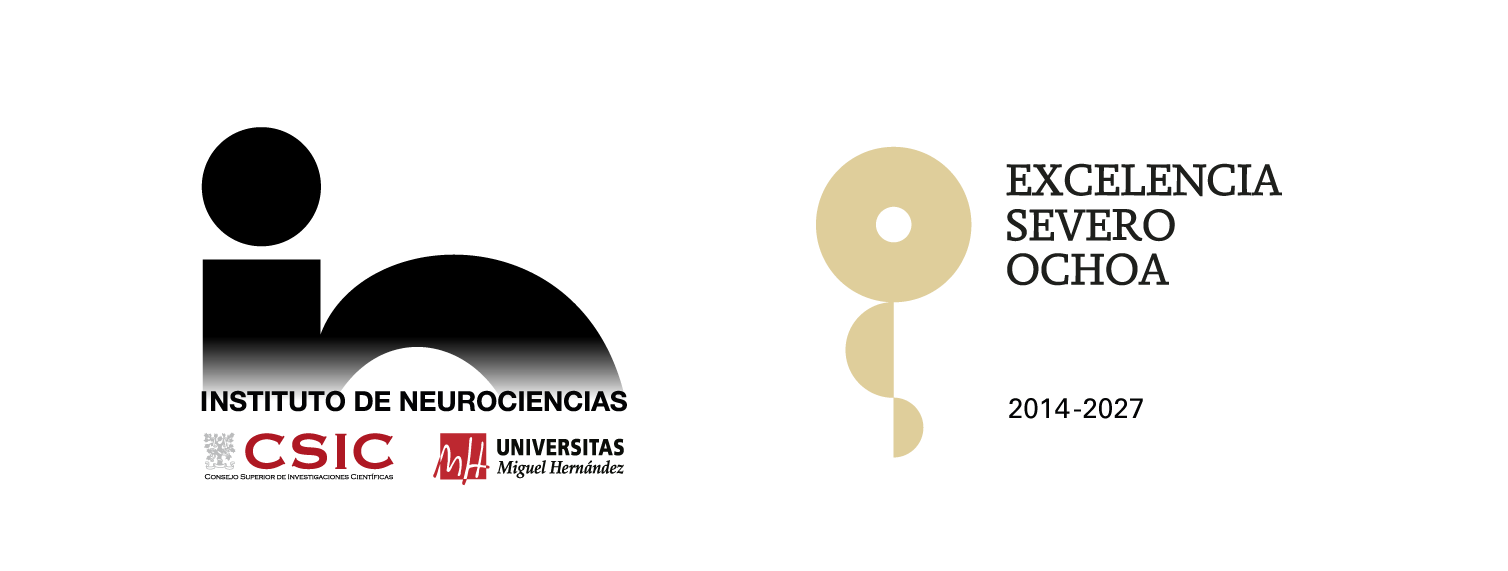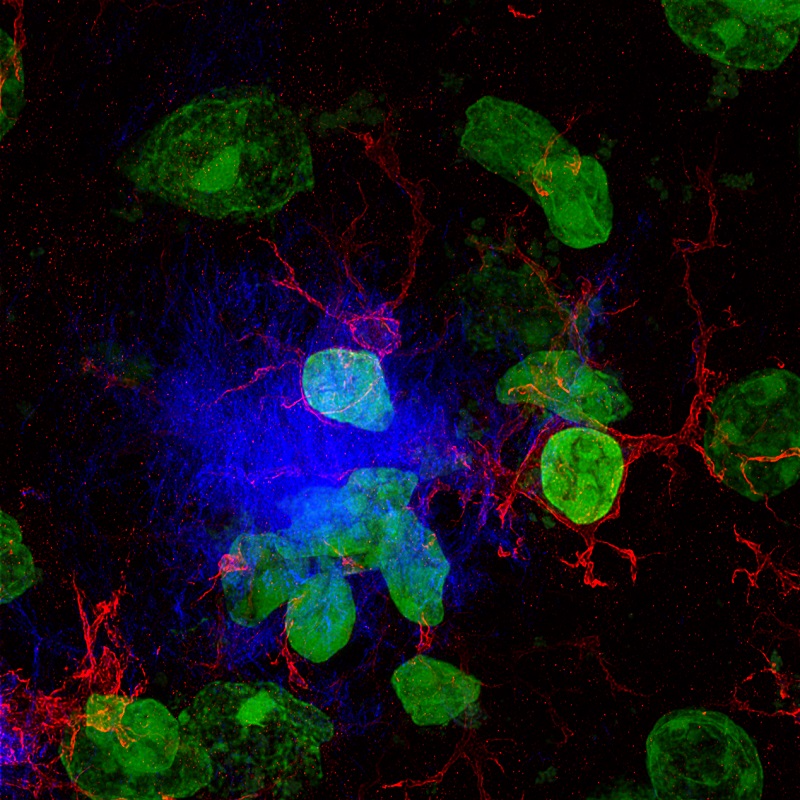A multiomic atlas of the aging hippocampus reveals molecular changes in response to environmental enrichment.
Photo: Alejandro González Ramón and Jose Vicente Sánchez Mut, IN-CSIC-UMH researchers who participated in the study.
Physical and cognitive environmental stimuli achieve molecular rejuvenation of the brain.
– A study led by CSIC researchers describes the first molecular atlas of the hippocampus during ageing in mice.
– These results could provide a molecular basis for explaining the benefits of staying active during old age and inform the design of healthy ageing policies.
Scientists from the Spanish National Research Council (CSIC) have analyzed the effect of physical and cognitive stimulation on the molecular alterations that occur during ageing. The results have allowed them to generate a broad collection of data that describes the molecular changes of the hippocampus during ageing and its cognitive and physical stimulation. This study, published in the journal Nature Communications, has had the participation of the Functional Epi-Genomics of Aging and Alzheimer’s Disease laboratory, led by José Vicente Sánchez Mut at the Institute for Neurosciences, a joint center of the CSIC and the Miguel Hernández University (UMH) from Elche.
The World Health Organization (WHO) has defined the Decade of Healthy Ageing (2021-2030) as a transformative proposal to confront an increasingly apparent reality: the unstoppable systemic ageing of the world’s population. Healthy aging seeks well-being in old age free of diseases and other complications. To achieve this, it has been shown that controlling our lifestyle through variables such as sport, education or diet has a crucial impact.
Environmental enrichment
In the development of this work, which has been led by the Cancer Epigenetics and Nanomedicine laboratory directed by Mario Fernández Fraga at the Nanomaterials and Nanotechnology Research Center (CINN), a joint center of the CSIC, the Government of the Principality of Asturias and the University of Oviedo, and which has had the collaboration of the laboratory directed by José Luis Trejo at the Cajal Institute (IC-CSIC) and the laboratory directed by Eduardo Iglesias Gutiérrez at the University of Oviedo, the experts found that the molecular patterns of the hippocampus had partially rejuvenated.
To do this, the researchers have used an experimental model known as “environmental enrichment”, in which mice live for months in a space with a variety of objects, such as toys, ramps, or tunnels. This environment generates significant stimulation of their cognitive, physical, and social activity, which resembles a lifestyle intervention that could be achieved with other activities in humans.
Researchers analyzed the different molecular layers of the hippocampus, a brain region of special importance in creating neurons, a process known as neurogenesis, of young (2 months old) and old (18 months old) mice subjected to this environmental enrichment. They detected that a notable part of the changes associated with ageing could be reversed through this stimulation, which consists of a lifestyle intervention. “The results of this work reveal how changes in our lifestyle can have a molecular and epigenetic impact on the body and be used in healthy aging interventions”, says Mario Fernández Fraga.
By performing the environmental enrichment paradigm and characterizing the behaviour of the mice, the scientists observed a whole series of markers, signalling pathways, and mechanisms that correlated with the rejuvenation of the mice. To study what was happening in the different cell types, a single-cell sequencing analysis was carried out at the Institute for Neurosciences. “A part of the reversed changes seems to affect glial cells, which support neurons in our brain, suggesting that these cell populations can be a strategic target in the study and treatment of the deterioration associated with ageing”, explains the CINN researcher Raúl Fernández Pérez, first author of the work.
Furthermore, the researchers observed very marked changes in oligodendrocytes and oligodendrocyte precursor stem cells (OPCs). These cells are responsible for generating myelin, a protective substance that surrounds nerve fibers and allows quick and adequate communication between neurons. “These changes indicate better myelination of the brain after environmental enrichment, something very interesting that deserves further investigation”, highlights Sánchez Mut.
Another very relevant aspect of this study is that the precise characterization of these molecular alterations will be very valuable for future work: “We have generated a massive collection of molecular data (genes, proteins, etc.) that will be very useful to the scientific community since it describes in depth the molecular changes that occur in the hippocampus during ageing and also during its cognitive and physical stimulation”, highlights CINN researcher Agustín Fernández Fernández, who co-led the work. Along these lines, Jose Vicente Sánchez Mut emphasizes the importance of this resource: “This work constitutes a source of data that will be very useful for other researchers in the field who are interested in analyzing them in depth. In our IN laboratory we are using them to develop other studies,” says the researcher.
This work was supported by funding from the Spanish Association Against Cancer, the Government of Asturias, the Carlos III Health Institute, the Rare Diseases Network Biomedical Research Center Consortium (CIBERER), the General CSIC Foundation, the Health Research Institute of the Principality of Asturias (ISPA), the Galván Association, the company ELITE SPORTS 2015, the NextGenerationEU funds of the European Commission through the PTI Global Health platform of the CSIC, the Recovery, Transformation and Resilience Plan of the Spanish Ministry of Science, Innovation and Universities, the PTI+ NEURO-AGNING+ Platform, the Severo Ochoa Program, the Spanish Ministry of Universities and the University Institute of Oncology of the Principality of Asturias.
Source: CSIC Comunicación / Institute for Neurosciences CSIC-UMH (in.comunicacion@umh.es)


 Español
Español
